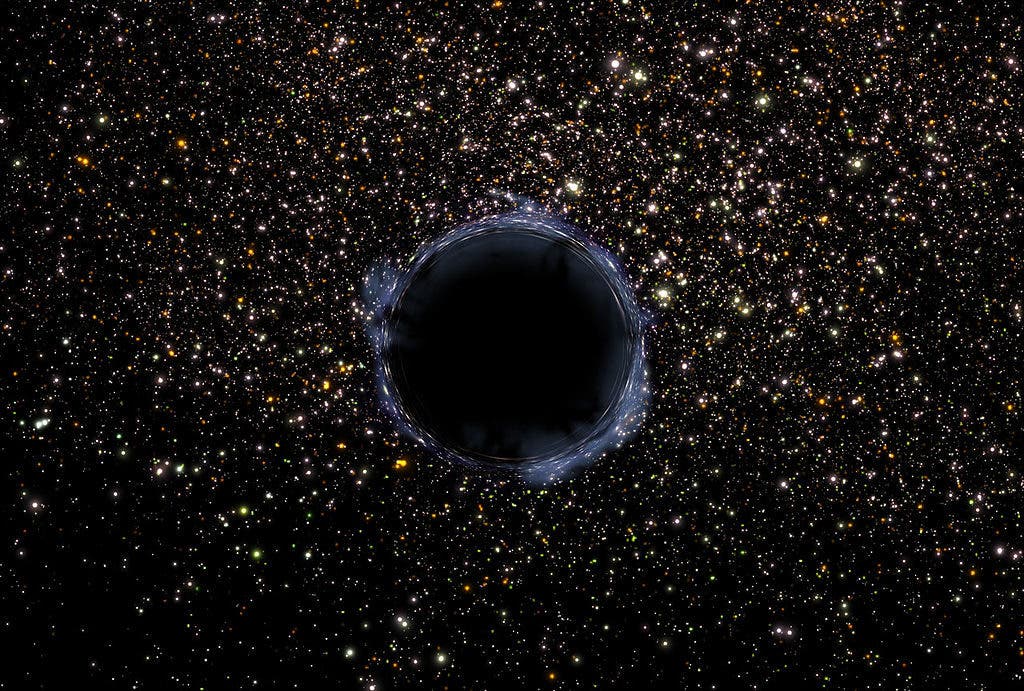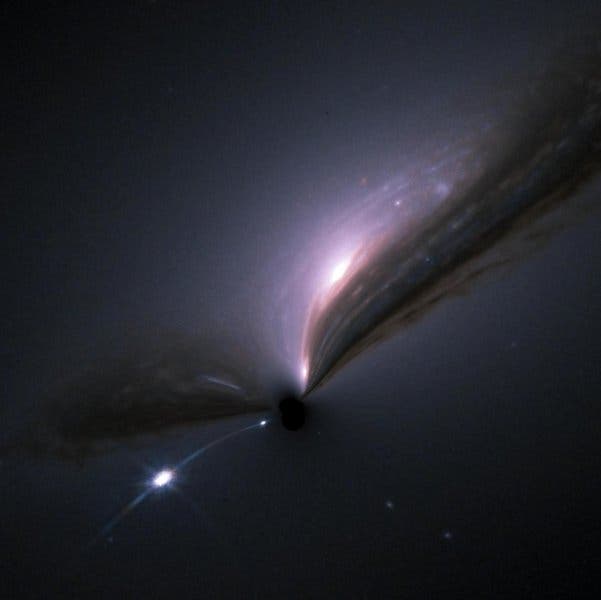A new study has ruled out black holes as the universe’s missing dark matter — shutting down an intriguing hypothesis that linked the two.

Dark matter
Dark matter is a strange thing, and it already has a historied tale. It was hinted at even before the 1900s by Lord Kelvin, but the first truly convincing evidence didn’t come until the 1970s when Vera Rubin and Kent Ford observed some discrepancies between how galaxies should have rotated, and how they were observed to do.
As years passed, it became clearer and clearer that something was out there — something which we can’t see directly, but which has a noticeable gravitational effect on existing matter. Today, astronomers calculate that dark matter constitutes 84.5% of the total mass in the universe, though no one really knows what dark matter really is. It’s funny to say it, but although it makes up most of our universe, we can’t really find it.
Dark matter does not seem to interact with anything else other than gravity, which doesn’t make things easier.
Several theorists have proposed scenarios in which there are multiple types of dark matter. While this seems plausible (though unproven), actually investigating them is daunting, as each of these types would require a different explanation for its origin, which brings even more complexity to an already puzzling situation. But this approach has its supporters.
For instance, dark matter could consist of different types of black holes, which are also notoriously difficult to study directly, but have a massive gravitational field.
“I can imagine it being two types of black holes, very heavy and very light ones, or black holes and new particles. But in that case one of the components is orders of magnitude heavier than the other, and they need to be produced in comparable abundance. We would be going from something astrophysical to something that is truly microscopic, perhaps even the lightest thing in the universe, and that would be very difficult to explain,” said lead author Miguel Zumalacárregui, a Marie Curie Global Fellow at the Berkeley Center for Cosmological Physics.
In the new study, Zumalacárregui and colleagues set out to see whether this idea holds any truth — after the 2015 detection of gravitational waves from colliding black holes, many astronomers hoped to find that dark matter was simply a swarm of black holes, sprinkled through the universe. But this turned out to not be the case.
Galaxy lenses

In order to figure things out, Zumalacárregui and colleagues carried out a statistical analysis of 740 of the brightest supernovas discovered as of 2014, looking for a phenomenon called gravitational lensing.
[panel style=”panel-default” title=”Gravity as a lens” footer=””]A regular lens focuses light by means of refraction. A simple lens consists of a single piece of transparent material, which, through its geometry, focuses (or disperses) light a specific focal point.
But astronomers learned that gravity can also be used as a lens — and since black holes are the most massive known objects in the universe, they are often involved in gravitational lensing. A gravitational lens doesn’t have a focal point, but rather a focal line.

[/panel]
The researchers found that none of the supernovas they studied were lensed by black holes, which strongly suggests that the dark matter is represented by black holes — if this were the case, then you would almost certainly observe the phenomenon at such a sample size.
Other researchers have performed similar but simpler analyses that yielded inconclusive results, but Zumalacárregui and colleagues incorporated the precise probability of seeing all magnifications, from small to huge, as well as uncertainties in brightness and distance of each supernova. Even for the smallest black holes, there would have certainly been some level of lensing.
“You cannot see this effect on one supernova, but when you put them all together and do a full Bayesian analysis you start putting very strong constraints on the dark matter, because each supernova counts and you have so many of them,” Zumalacárregui said. The more supernovas included in the analysis, and the farther away they are, the tighter the constraints.
So where does this leave us when it comes to dark matter? Probably back at the drawing board. Scientists disproved one of the theories, but we’re still not much closer to identifying the source and nature of dark matter.
“We are back to the standard discussions. What is dark matter? Indeed, we are running out of good options,” said Uroš Seljak, a UC Berkeley professor of physics and astronomy and BCCP co-director. “This is a challenge for future generations.”
Miguel Zumalacárregui, Uroš Seljak. Limits on Stellar-Mass Compact Objects as Dark Matter from Gravitational Lensing of Type Ia Supernovae. Physical Review Letters, 2018; 121 (14) DOI: 10.1103/PhysRevLett.121.141101






